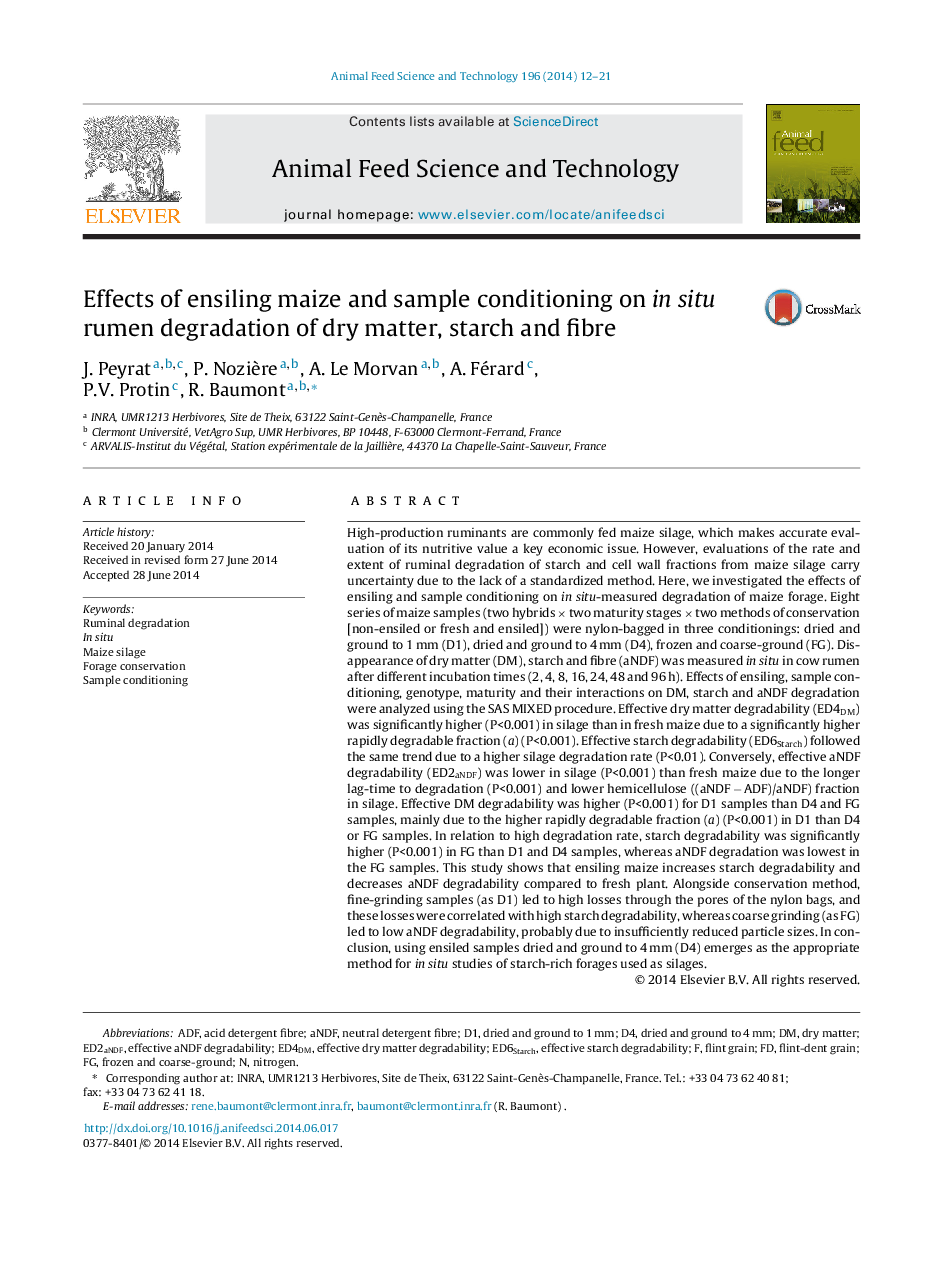| Article ID | Journal | Published Year | Pages | File Type |
|---|---|---|---|---|
| 2419538 | Animal Feed Science and Technology | 2014 | 10 Pages |
•Ensiling and sample conditioning have an effect on in situ degradation of maize.•Ensiling maize increased in situ degradability of dry matter and starch.•Ensiling maize decreased in situ degradability of cell walls (aNDF).•Grinding dried samples at 4 mm limits starch losses during in situ degradation.
High-production ruminants are commonly fed maize silage, which makes accurate evaluation of its nutritive value a key economic issue. However, evaluations of the rate and extent of ruminal degradation of starch and cell wall fractions from maize silage carry uncertainty due to the lack of a standardized method. Here, we investigated the effects of ensiling and sample conditioning on in situ-measured degradation of maize forage. Eight series of maize samples (two hybrids × two maturity stages × two methods of conservation [non-ensiled or fresh and ensiled]) were nylon-bagged in three conditionings: dried and ground to 1 mm (D1), dried and ground to 4 mm (D4), frozen and coarse-ground (FG). Disappearance of dry matter (DM), starch and fibre (aNDF) was measured in situ in cow rumen after different incubation times (2, 4, 8, 16, 24, 48 and 96 h). Effects of ensiling, sample conditioning, genotype, maturity and their interactions on DM, starch and aNDF degradation were analyzed using the SAS MIXED procedure. Effective dry matter degradability (ED4DM) was significantly higher (P<0.001) in silage than in fresh maize due to a significantly higher rapidly degradable fraction (a) (P<0.001). Effective starch degradability (ED6Starch) followed the same trend due to a higher silage degradation rate (P<0.01). Conversely, effective aNDF degradability (ED2aNDF) was lower in silage (P<0.001) than fresh maize due to the longer lag-time to degradation (P<0.001) and lower hemicellulose ((aNDF − ADF)/aNDF) fraction in silage. Effective DM degradability was higher (P<0.001) for D1 samples than D4 and FG samples, mainly due to the higher rapidly degradable fraction (a) (P<0.001) in D1 than D4 or FG samples. In relation to high degradation rate, starch degradability was significantly higher (P<0.001) in FG than D1 and D4 samples, whereas aNDF degradation was lowest in the FG samples. This study shows that ensiling maize increases starch degradability and decreases aNDF degradability compared to fresh plant. Alongside conservation method, fine-grinding samples (as D1) led to high losses through the pores of the nylon bags, and these losses were correlated with high starch degradability, whereas coarse grinding (as FG) led to low aNDF degradability, probably due to insufficiently reduced particle sizes. In conclusion, using ensiled samples dried and ground to 4 mm (D4) emerges as the appropriate method for in situ studies of starch-rich forages used as silages.
